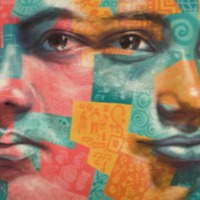
Deborah
There is an estimated 48,000 people living in modern slavery in Libya (GSI 2018). Libya is a major transit destination for migrants and refugees hoping to reach Europe by sea. Human trafficking networks have prospered amid lawlessness, created by the warring militias that have been fighting for control of territories since the toppling of Muammar Gaddafi in 2011. Highly organized trafficking and migrants smuggling networks that reach into Libya from Niger, Nigeria, Chad, Eritrea, Ethiopia, Somalia, Sudan, and other sub-Saharan states subject migrants to forced labor and forced prostitution through fraudulent recruitment, confiscation of identity and travel documents, withholding or non-payment of wages, debt bondage, and verbal, physical, and sexual abuse. In some cases, migrants reportedly pay smuggling fees to reach Tripoli, but once they cross the Libyan border they are sometimes abandoned in southern cities or the desert where they are susceptible to severe forms of abuse and human trafficking. Deborah left her home in Nigeria because her stepmother treated her badly. She wanted to become a fashion designer and when she met a man who promised to take her to Europe, she gladly accepted. It was a big surprise to her when after arriving in Libya, she was told that the journey stopped there, and she had to start working as a prostitute.
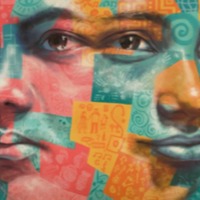
Rita
There are an estimated 145,000 people liing in conditions of modern slavery in Italy (GSI 2018). Italy is a destination, transit, and source country for women, children, and men subjected to sex trafficking and forced labour. Victims originate from Nigeria, Romania, Morocco, China, and other countries. Female victims are often subjected to sex trafficking in Italy after accepting promises of employment as dancers, singers, models, restaurant servers, or caregivers. Romanian and Albanian criminal groups force Eastern European women and girls into commercial sex. Rita was homeless when she was approached by a woman who asked her if she would like to travel and promised to take her to Europe where she could work in her supermarket. Before she left, the woman told Rita the travel costs and made her undergo a voodoo ceremony and swear an oath that she would pay back the money for the journey. As the woman accompanied Rita on the journey from Nigeria through Libya, her attitude began to change. Rita was beaten, abused, and raped by men along the way but the woman did not intervene or protect her. The journey was traumatising, and she saw many people die on the way. Once she arrived in Florence, instead of the supermarket work she was promised, Rita was forced to work as a prostitute in a brothel to pay back the money she owed. After three months of being locked up in the brothel, she escaped and is now in Germany, but she is still being threatened by the Madam in Italy.
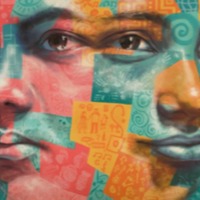
Vanessa
There is an estimated 48,000 people living in modern slavery in Libya (GSI 2018). Libya is a major transit destination for migrants and refugees hoping to reach Europe by sea. Human trafficking networks have prospered amid lawlessness, created by the warring militias that have been fighting for control of territories since the toppling of Muammar Gaddafi in 2011. Highly organized trafficking and migrants smuggling networks that reach into Libya from Niger, Nigeria, Chad, Eritrea, Ethiopia, Somalia, Sudan, and other sub-Saharan states subject migrants to forced labor and forced prostitution through fraudulent recruitment, confiscation of identity and travel documents, withholding or non-payment of wages, debt bondage, and verbal, physical, and sexual abuse. In some cases, migrants reportedly pay smuggling fees to reach Tripoli, but once they cross the Libyan border they are sometimes abandoned in southern cities or the desert where they are susceptible to severe forms of abuse and human trafficking. In Nigeria, Vanessa struggled to house and feed herself and her three children after being thrown out of their home by her abusive husband. She worked as a hawker, selling fruit, and as a hairdresser, but worried constantly about money. Then a friend mentioned a sister in Italy with a hairdressing salon and recommended Vanessa to work there. She was told it would be an easy journey through Libya, however after arriving in Tripoli, Vanessa and her fellow travellers were housed in a smuggler’s compound when a fight broke out among neighbourhood gangs. During this time, her baby developed a fever and became critically ill, dying shortly afterward. She set off from Tripoli on a smuggler’s boat headed for Italy, but the boat was captured by bandits who took them back to Libya and held the passengers for ransom. Vanessa’s friend's sister in Italy paid for her release, but she was unable to make it to Italy. When she tried for a second time, she was caught by the Libyan Coast Guard, brought back, and imprisoned. A Ghanaian man bailed her out of prison only to sell her to a brothel where she had to work as a prostitute to pay off her debt.
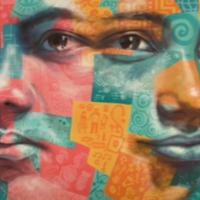
Lakshmi
There are an estimated 4,000 people living in modern slavery in Qatar (GSI 2018). Qatar is a destination country for men and women subjected to forced labour and, to a much lesser extent, forced prostitution. Men and women from Nepal, India, Pakistan, Bangladesh, the Philippines, Indonesia, Sri Lanka, Sudan, Kenya, Nigeria, Uganda, and other countries voluntarily migrate to Qatar as unskilled laborers and domestic workers, often paying illegal and exorbitant fees to unscrupulous recruiters in the labour-sending countries, thereby increasing their vulnerability to debt bondage. Some workers subsequently face conditions indicative of involuntary servitude, to include restricted movement, payment withholding, passport confiscation, exit permit retention, and threats of deportation or abuse. Individuals in Qatar sell visas to migrants and occasionally demand regular payments, enabling migrant workers to work illegally and without legal recourse against their respective sponsors, although reportedly this trend is on the decline. Lakshmi was trafficked from India to Qatar into domestic servitude, the age of 24. She was sexually abused and beaten by her employers who took away her documents. When she asked to go back to India she was told she would have to pay. The harassment continued until her case was taken up by the Indian embassy in Qatar.
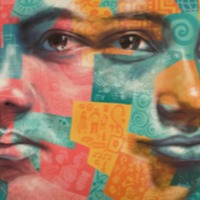
Kartika
There are an estimated 403,000 people living in modern slavery in the United States (GSI 2018). Sex trafficking exists throughout the country. Traffickers use violence, threats, lies, debt bondage and other forms of coercion to compel adults and children to engage in commercial sex acts against their will. The situations that sex trafficking victims face vary, many victims become romantically involved with someone who then forces them into prostitution. Others are lured with false promises of a job, and some are forced to sell sex by members of their own families. Victims of sex trafficking include both foreign nationals and US citizens, with women making up the majority of those trafficked for the purposes of commercial sexual exploitation. In 2015, the most reported venues/industries for sex trafficking included commercial-front brothels, hotel/motel-based trafficking, online advertisements with unknown locations, residential brothels, and street-based sex trafficking. Kartika* was twenty-four when she was flown from Indonesia to the United States by a recruitment agent. Upon arriving in New York, she was trafficked for commercial sexual exploitation. He passport and documents were taken, and she was told she had to pay off her travel costs
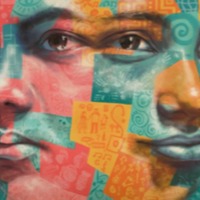
Santiago
There are an estimated 403,000 people living in conditions of modern slavery in the United States (GSI 2018). The US attracts migrants and refugees who are particularly at risk of vulnerability to human trafficking. Trafficking victims often responding to fraudulent offers of employment in the US migrate willingly and are subsequently subjected to conditions of involuntary servitude in industries such as forced labour and commercial sexual exploitation. Santiago travelled from Mexico to the United States and was trafficked into forced labour in California when he was 21 years old. Without papers, Santiago was vulnerable. When he asked his employer for his salary, she called immigration and had him deported, then arranged for him to cross back and then kept him in debt bondage for the expenses of his journey.

Galyna
There are an estimated 794,000 people living in conditions of modern slavery in Russia (GSI 2018). Women and children are subjected to commercial sexual exploitation and sex trafficking in prostitution and pornography. Women are lured by the promise of lucrative employment and a new location, travelling to the country under the pretence of legitimate employment and a better life. However, when they arrive, they are forced into prostitution in brothels, hotels and saunas. There is also evidence of traffickers advertising sexual services of children online. However, despite the evidence of sex trafficking in Russia, it remains an under-recognised area of enslavement in the country. Galyna*, a 25-year-old woman from Donetsk (Ukraine) worked at a bar in Moscow. In addition to dancing, her employer forced her to perform sex-services for clients, though this was not agreed prior to employment. She had no written contract and received payment from clients and her employer in cash. She was also forced to perform services, such as unprotected sex, under threat of non-payment and dismissal. No social security or health care was provided, and she had no registered place of residence. When stopped by the police in the street, she had to pay bribes. Her relatives in Ukraine did not know what she was doing in Moscow. She sent money home to help her parents and hoped to find another job. Only migrants work at the club and they knew next to nothing about their employer.
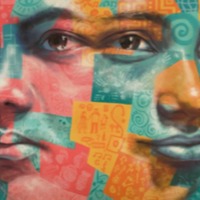
Erasyl
There are an estimated 794,000 people living in conditions of modern slavery in Russia (GSI 2018). Forced labour remains the predominant form of human trafficking in the country. Labour trafficking has been reported in the construction, manufacturing, logging, textile, and maritime industries, as well as in sawmills, agriculture, sheep farms, grocery and retail shops, restaurants, waste sorting, street sweeping, domestic service, and forced begging. Many migrant workers experience exploitative labour conditions characteristic of trafficking cases, such as withholding of identity documents, non-payment for services rendered, physical abuse, lack of safety measures, or extremely poor living conditions. Erasyl*, a 46-year-old man from Kazakhstan travelled to Russia to get money for his son’s education. He paid a recruiter to find him work. Upon arrival Erasyl had his passport confiscated and he was forced to work as a bricklayer to pay off the debt incurred from the recruiter.
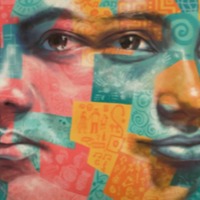
Petro
There are an estimated 794,000 people living in conditions of modern slavery in Russia (GSI 2018). Forced labour remains the predominant form of human trafficking in the country. Labour trafficking has been reported in the construction, manufacturing, logging, textile, and maritime industries, as well as in sawmills, agriculture, sheep farms, grocery and retail shops, restaurants, waste sorting, street sweeping, domestic service, and forced begging. Many migrant workers experience exploitative labour conditions characteristic of trafficking cases, such as withholding of identity documents, non-payment for services rendered, physical abuse, lack of safety measures, or extremely poor living conditions. Petro*, a 31-year-old man from Ukraine travelled to Russia for work to buy his family a new home. Upon arrival, he went to a recruiter who found him work. Petro paid the recruiter and gave him his passport. He was trapped in debt bondage forced to work long hours as a labourer to pay off his loan.
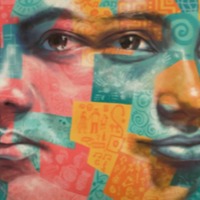
Danyil
There are an estimated 794,000 people living in conditions of modern slavery in Russia (GSI 2018). Forced labour remains the predominant form of human trafficking in the country. Labour trafficking has been reported in the construction, manufacturing, logging, textile, and maritime industries, as well as in sawmills, agriculture, sheep farms, grocery and retail shops, restaurants, waste sorting, street sweeping, domestic service, and forced begging. Many migrant workers experience exploitative labour conditions characteristic of trafficking cases, such as withholding of identity documents, non-payment for services rendered, physical abuse, lack of safety measures, or extremely poor living conditions. Danyil*, a 33-year-old man from Uzbekistan travelled to Russia for work after hearing about job opportunities from his friends. Danyil was not registered to work in Russia and was arrested by police. After Danyil’s employer bailed him out of jail, he had to work to pay off his debt.
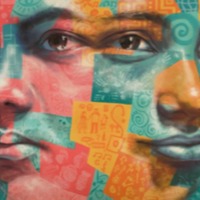
Maxim
There are an estimated 794,000 people living in conditions of modern slavery in Russia (GSI 2018). Forced labour remains the predominant form of human trafficking in the country. Labour trafficking has been reported in the construction, manufacturing, logging, textile, and maritime industries, as well as in sawmills, agriculture, sheep farms, grocery and retail shops, restaurants, waste sorting, street sweeping, domestic service, and forced begging. Many migrant workers experience exploitative labour conditions characteristic of trafficking cases, such as withholding of identity documents, non-payment for services rendered, physical abuse, lack of safety measures, or extremely poor living conditions. Maxim*, a 20-year-old man from Kazakhstan was bought as a child and trafficked to Russia. He met a man who promised to help him build a career fighting, but when he arrived in Sverdlovsk he was forced into an illegal fighting ring.
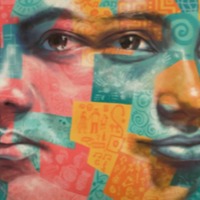
Salmoni
Bonded labour, also known as debt bondage or debt slavery, is the most common form of modern slavery. Debt bondage occurs when a person is forced to work to pay off a debt, often taken to pay for health emergencies because of lack of universal health coverage. People are forced to work for little or no pay, with no control over their debt. The money they earn goes to pay off their loan and the value of their work invariably becomes greater than the original sum borrowed. Bonded labour is most widespread in South Asian countries such as India and Pakistan. Often entire families have to work to pay off the debt taken by one of its members. Sometimes, the debt can be passed down the generations and children can be held in debt bondage because of a loan their parents had taken decades ago. In South Asia it still flourishes in agriculture, brick kilns, mills, mines and factories. Salmoni was forced to leave school and work on a brickyard after her father became ill and could no longer afford to pay rent. She worked long hours and was underpaid. When she and her parents agreed that she should no longer work and go back to school, her mother was diagnosed with breast cancer. Salmoni’s father borrowed the money for her surgery from the brickyard owner and the family became trapped in bonded labour.
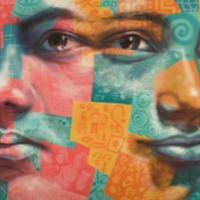
Farzana
There are an estimated 61,000 people living in modern slavery in Saudi Arabia (GSI 2018). It is a source and destination country for men and women trafficked from South and South East Asia and Africa. People voluntarily migrate to the country to work in a variety of sectors including construction and domestic service; many of these workers are vulnerable to forced labour. Traffickers and brokers often illegally recruit migrants to work in Saudi Arabia and subsequently forced them into domestic servitude or debt bondage. Female domestic workers are particularly at risk of trafficking due to their isolation inside private residences. Non-payment or late payment of wages remains a complaint from foreign workers, while employer's withholding of worker's passports remains a significant problem. Trafficking perpetrators include businesses of all sizes, private families, recruitment companies in both Saudi Arabia and labor-sending countries, and organized criminal elements. Farzana travelled from Sri Lanka to Saudi Arabia for work to pay off debts she owed on her house. Upon arrival she was locked up with others at the agency that had recruited her. She managed to escape.
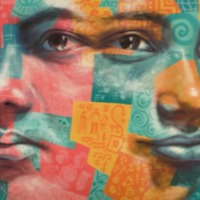
Tanya
The Global Slavery Index 2018 estimates that on any given day in 2016, an estimated 3.6 million men, women and chidlren were living in modern slavery in Europe and Central Asia (GSI 2018). People are subjected to exploitation in forced labour, debt bondage and forced sexual exploitation. Government response in Europe is particularly strong with a number of regional bodies holding them account and monitoring responses, and while countries in Central Asia have taken steps to tack modern slavery, more needs to be done. Tanya was trafficked from Ukraine after being offered a job in another country. Her brother was sick and in need of an operation and her family was poor. She was sold and forced into prostitution.
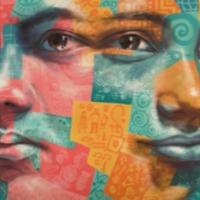
Aja
There are an estimated 17,000 people living in modern slavery in Jordan (GSI 2018). Jordan is a source, transit and destination country for adults and children subjected to forced labour, domestic servitude and sex trafficking. People are trafficked primarily from South and Southeast Asia, East Africa, Egypt and Syria. Forced labour victims experience withheld or non-payment wages, confiscation of identity documents, restricted freedom of movement, unsafe living conditions, long hours without rest, isolation, and verbal and physical abuse. Jordan relies on foreign migrant workers – many of whom are undocumented – in several sectors, including construction, agriculture, textiles, and domestic work. Aja* travelled to Jordan for work after the death of her husband. After six months her wages were withheld and she was subjected to physical abuse by her employer.
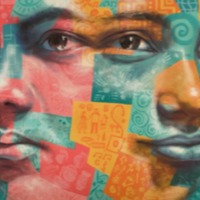
Amobi
There is an estimated 48,000 people living in modern slavery in Libya (GSI 2018). Libya is a major transit destination for migrants and refugees hoping to reach Europe by sea. Human trafficking networks have prospered amid lawlessness, created by the warring militias that have been fighting for control of territories since the toppling of Muammar Gaddafi in 2011. Highly organized trafficking and migrants smuggling networks that reach into Libya from Niger, Nigeria, Chad, Eritrea, Ethiopia, Somalia, Sudan, and other sub-Saharan states subject migrants to forced labor and forced prostitution through fraudulent recruitment, confiscation of identity and travel documents, withholding or non-payment of wages, debt bondage, and verbal, physical, and sexual abuse. In some cases, migrants reportedly pay smuggling fees to reach Tripoli, but once they cross the Libyan border they are sometimes abandoned in southern cities or the desert where they are susceptible to severe forms of abuse and human trafficking. Amobi* moved to Benin after the death of his father. He was told to travel to Europe through Libya, where he was trafficked through debt bondage.
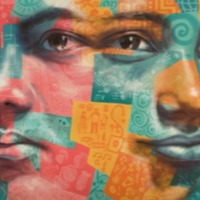
Chidi
There is an estimated 48,000 people living in modern slavery in Libya (GSI 2018). Libya is a major transit destination for migrants and refugees hoping to reach Europe by sea. Human trafficking networks have prospered amid lawlessness, created by the warring militias that have been fighting for control of territories since the toppling of Muammar Gaddafi in 2011. Highly organized trafficking and migrants smuggling networks that reach into Libya from Niger, Nigeria, Chad, Eritrea, Ethiopia, Somalia, Sudan, and other sub-Saharan states subject migrants to forced labor and forced prostitution through fraudulent recruitment, confiscation of identity and travel documents, withholding or non-payment of wages, debt bondage, and verbal, physical, and sexual abuse. In some cases, migrants reportedly pay smuggling fees to reach Tripoli, but once they cross the Libyan border they are sometimes abandoned in southern cities or the desert where they are susceptible to severe forms of abuse and human trafficking. Chidi was trafficked in Libya on his way to France. When his friend failed to pay the $3,000 fee to smugglers, he was locked up and tortured. Though his family took out loans to pay of his 'debt', he was later kidnapped and imprisoned once again. Chidi received support from Programme X including counselling, financial assistance and business skills training. He went on to set up a retail unit selling women’s accessories.
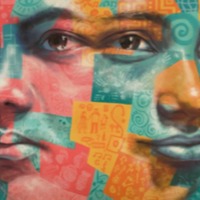
Rahat
There are an estimated 1.22 million people living in conditions of modern slavery in Indonesia (GSI 2018). Traffickers exploit both domestic and foreign victims in Indonesia. Government regulations allow employers in certain sections, including small and medium enterprises and labour-intensive industries, an exemption from minimum wage requirement, thus increasing risks of exploitation. Traffickers exploit many Indonesians through force and debt-coercion. Men, women and children are exploited in fishing, construction, on plantations, in mining and in manufacturing industries. Vessel crew on board Chinese, Korean, Vanuatuan, Taiwan, Thai, Malaysian and Philippines-flagged and/or owned fishing vessels operating in Indonesian waters subject fisherman to forced labour. Recruitment agencies lure people with promises of high wages, charge fees, assign them fake identities and labor permit documents and send them to fish long hours in waters on vessels operating under complex multinational flagging and ownership arrangements. Crews on board fishing vessels have reported low or unpaid salaries and coercive tactics such as contract discrepancies, document retention, restricted communication, poor living and working conditions, threats of violence and physical and sexual abused. Rahat was looking for work when he was encouraged by a friend to travel to Bangkok for work. He was told he would be able to make more money at sea than on land, however instead he was trafficked on to a fishing trawler in Indonesia. Conditions on the boat were awful, there was not enough food to last the crew and they were subjected to beating if they were ‘lazy.’
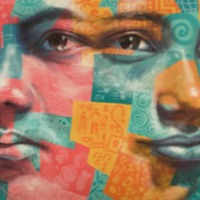
Layla
There are an estimated 136,000 people living on conditions of modern slavery in the United Kingdom (Global Slavery Index 2018). According to the 2017 annual figures provided by the National Crime Agency, 5, 145 potential victims of modern slavery were referred through the National Referral Mechanism in 2017, of whom 2,454 were female, 2688 were male and 3 were transgender, with 41% of all referrals being children at the time of exploitation. People are subjected to slavery in the UK in the form of domestic servitude, labour exploitation, organ harvesting and sexual exploitation, with the largest number of potential victims originating from Albania, China, Vietnam and Nigeria. This data however does not consider the unknown numbers of victims that are not reported. Layla* came to the UK from Kenya after escaping religious strife. She had found a school in the UK who had agreed to admit her, however upon arrival she was taken to a small house and foced into care work. Traffickers took her wages to pay back the ‘debt’ incurred from getting her to the country. Layla was forced to work long hours, prevented from spending time outside and was not properly fed. After 3 years the ‘school’ was shut down, but her trafficker continued to exploit her. Layla was finally able to leave her situation after she was diagnosed with cancer in her trafficker’s name so that he could receive the assistance payments. Layla was arrested for fraud and while police initially assumed she was the criminal, her lawyer realised she had been trafficked and helped her.

Jayson De Guzman
There are an estimated 403,000 people living in conditions of modern slavery in the United States (GSI 2018). The US attracts migrants and refugees who are particularly at risk of vulnerability to human trafficking. Trafficking victims often responding to fraudulent offers of employment in the US migrate willingly and are subsequently subjected to conditions of involuntary servitude in industries such as forced labour and commercial sexual exploitation. Jayson De Guzman was working in construction in the Philippines when he came into contact with a woman who offered him work in the United States on a P-1 visa. Upon arrival in the US, Jayson was met by this same woman who took his passport and told him he owed her $12,000 and would have to work for her for 10 years to pay off his debt. De Guzman was forced to work in the same elderly care facility as Angela Guanzon who had been trafficked from the Philippines by the same recruiter. Jayson was forced to work seven days a week, twenty-four hours a day with breaks only for sleep. The majority of his salary was taken by the recruitment as ‘repayment’ for his debts. Jayson De Guzman was finally able to escape his situation when a neighbour of the facility noticed the workers were not getting any days off and called the FBI.